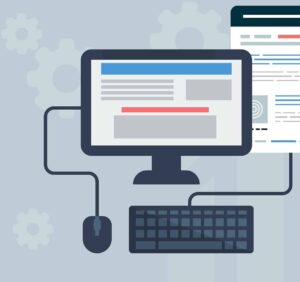
Blue light emitted from mobile devices and screens has garnered attention due to its potential impact on our eyes and overall health.
Here’s an overview of its effects, sources, and possible solutions:
Effects of Blue Light on Eyes and Body:
- Eye Strain and Fatigue: Prolonged exposure to blue light from mobile devices can cause eye strain, leading to symptoms such as dry eyes, irritation, and difficulty focusing.
- Disruption of Sleep Patterns: Blue light exposure, especially before bedtime, can interfere with the production of melatonin, a hormone that regulates sleep-wake cycles. This disruption can lead to difficulty falling asleep and poor sleep quality.
- Increased Risk of Macular Degeneration: Some studies suggest that prolonged exposure to blue light may contribute to an increased risk of age-related macular degeneration (AMD), a leading cause of vision loss in older adults.
- Headaches: Blue light exposure has been linked to an increased frequency of headaches and migraines in some individuals.
Sources of Blue Light:
- Mobile Devices: Smartphones, tablets, and other mobile devices emit blue light, and many people spend significant amounts of time using these devices each day.
- Computer Screens: Laptops, desktop computers, and monitors also emit blue light, especially those with LED screens.
- Televisions: Flat-screen televisions emit blue light, particularly LED and LCD models.
- LED Lighting: Energy-efficient LED lighting, including indoor and outdoor lighting, emits blue light.
Solutions to Reduce Blue Light Exposure:
- Use Blue Light Filters: Many smartphones, tablets, and computers offer built-in blue light filter settings that can be activated to reduce blue light emission. Additionally, there are third-party apps and screen protectors available that offer similar functionality.
- Limit Screen Time: Reduce overall screen time, especially in the hours leading up to bedtime, to minimize exposure to blue light and mitigate its effects on sleep patterns.
- Adjust Display Settings: Lower the brightness level of your device’s screen and adjust the color temperature settings to reduce blue light emission.
- Wear Blue Light Blocking Glasses: Specialized glasses with lenses that filter out blue light can be worn while using digital devices to reduce eye strain and minimize exposure to harmful blue light.
- Take Breaks: Practice the 20-20-20 rule by taking a 20-second break every 20 minutes and focusing on an object at least 20 feet away. This helps reduce eye strain and fatigue caused by prolonged screen use.
- Use Dim Lighting: Dim the lights in your environment, especially in the evening, to reduce overall exposure to blue light and promote better sleep.
- Consider Screen-Free Activities: Encourage activities that don’t involve screen time, such as reading physical books, engaging in outdoor activities, or spending time with loved ones.
By implementing these strategies, you can minimize the potential harmful effects of blue light exposure from mobile devices and screens, promoting better eye health and overall well-being.





